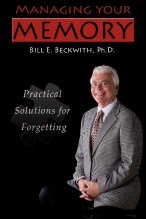Increased Levels of Fitness in Midlife Reduce the Risk of Dementia
It has become increasingly clear that most progressive dementias slowly unfold over the course of several decades. For example, Alzheimer’s disease forms decades before there are any signs or symptoms. It doesn’t appear suddenly or show up as a “conversion” from Mild Cognitive Impairment. This is good news. We can be proactive by life style and planning years ahead instead of just reacting to changes after they occur. Life style interventions must start decades before problems show themselves.
The issue to resolve is what life style changes is worth the effort. Exercise is the one factor that is emerging as a clearly protective of the brain. Many short-term studies have suggested that increasing levels of fitness now pays benefits for future brain health. The Cooper Center Longitudinal Study, Cooper Clinic in Dallas, published a study that prospectively followed a large number of participants over the course of several decades (nearly 25 years on the average). Additionally fitness was measured objectively, with a treadmill test, not by self-report.
The study included 19,458 men and women who were in midlife (average age = 49.8) beginning in 1971. Fitness level was measured by maximum time on treadmill test. Dementia was determined from Medicare records for participants who were 65 and older by December 2009 – 1659 cases of dementia in this study. Fitness at midlife was associated with a lower risk of dementia from all causes (e.g., Alzheimer’s, vascular).
There are a number of possible benefits of fitness for the brain. First, high levels of fitness are associated with reduced effects of the wear and tear of aging (i.e., less shrinkage and lessened white matter disease in the brain). Second, maintaining higher levels of fitness reduces the risk of diabetes and hypertension. Third, exercise may improve hippocampal (the short-term memory structure) function and induce the release of brain growth factors, which increase neuroplasticity.
Even if you are over 50, it’s not too late. The best way to protect your brain is through physical exercise. It is estimated that fewer than 10% of the US population reach the minimal goal of at least 2.5 hours of moderate exercise per week. You only need a good pair of comfortable exercise shoes and comfortable clothing. Start slow and gradual and work toward consistency.




